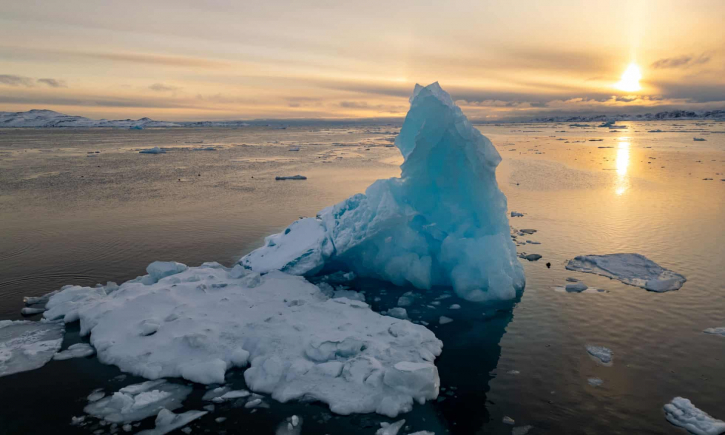Arctic Winter Sea Ice Hits Record Low in 2025

Published : 08:24, 1 April 2025
Arctic Winter Sea Ice Hits Record Low in 2025
Arctic winter sea ice has reached its lowest extent on record, according to data from NASA and the U.S. National Snow and Ice Data Center (NSIDC). The annual peak, recorded on March 22, measured just 5.53 million square miles, making it the lowest maximum ice coverage in 47 years of satellite records. This marks a dramatic decline, with ice coverage 1.1 million square miles smaller than last year’s peak and 30,000 square miles below the previous record low set in 2017.
Regions particularly affected include the Gulf of St. Lawrence, which saw almost no ice coverage, and the Sea of Okhotsk, where sea ice levels were significantly below average.
One of the most striking events of this winter occurred in late January, when Arctic sea ice unexpectedly decreased, losing an area larger than Italy (115,000 square miles). This unusual mid-winter loss was driven by strong cyclones, which pushed southerly winds into the Barents and Bering seas, generating ocean waves that broke apart thin ice at the edge of the ice sheet. At the same time, temperatures soared up to 12°C (22°F) above normal in areas between northern Greenland and the North Pole.
The record-breaking decline underscores the rapid changes occurring in the Arctic, with scientists warning that the continued loss of sea ice could have far-reaching impacts on global climate patterns, weather systems, and marine ecosystems.
As the Arctic warms at a pace four times faster than the global average, experts say these unprecedented changes highlight the urgency of addressing climate change.
Arctic sea ice is expected to continue its decline in the coming years, with some climate models suggesting the region could experience ice-free summers before 2050. Scientists point to rising global temperatures, warmer seas, strong winds breaking up ice, and overall thinner ice layers as key factors driving the loss, all exacerbated by the ongoing climate crisis.
Meanwhile, in the United States, a prolonged period of severe weather is gripping central and eastern regions. Over the weekend of March 29-30, powerful storms swept from the Great Lakes to Texas, producing multiple tornadoes, straight-line wind gusts reaching 96 mph (154 km/h), and hail up to 3 inches in diameter. The storms are expected to move into eastern parts of the country on Monday, bringing further threats of damaging conditions.
A second, more widespread round of severe weather is forecast to develop across the central U.S. on Tuesday. As a strong upper-level low moves eastward, it will interact with a sharp boundary between warm, humid air from the south and colder air to the north. The resulting storms, expected from Minnesota to Texas, will bring an increased risk of large hail, damaging winds, and potentially significant tornadoes. The severe weather threat will then shift eastward as the week progresses.
Communities in the storm-affected regions are urged to stay alert to rapidly changing weather conditions and heed warnings from meteorologists and local authorities.

.png)
.png)







